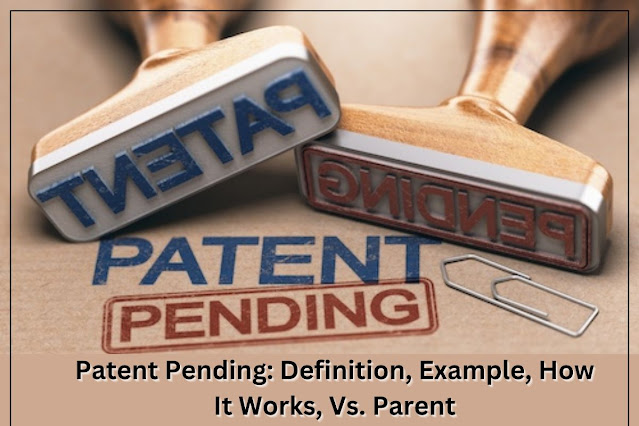Essential Steps to Patent Your Idea and Secure Your Rights
Turning
your innovative idea into a patented invention can be a game-changer, offering
you legal protection and the potential for financial gain. However, the process
of obtaining a patent can be complex and requires careful planning and
execution. This guide will walk you through the essential steps to patent your idea
and secure your rights.
Understanding Patents
Before
diving into the steps, it’s crucial to understand what a patent is. A patent is
a legal document granted by the government that gives an inventor exclusive
rights to their invention for a specified period, usually 20 years. This means
no one else can make, use, or sell the invention idea
without the inventor's permission. There are three main types of patents:
- Utility Patents: For new and useful inventions or discoveries.
- Design Patents: For new, original, and ornamental designs for an
article of manufacture.
- Plant Patents: For new and distinct, invented or discovered
asexually reproduced plants.
Step 1: Determine If Your Idea is Patentable
Not
all ideas qualify for a patent. Your invention must be:
- Novel: It should be new and not known to the public before
you filed for the patent.
- Non-Obvious: It should not be an obvious improvement or
combination of existing inventions.
- Useful: It should have a practical application or utility.
Conduct
preliminary research to see if similar inventions exist. This is often referred
to as a prior art search. Online databases like Google Patents and the United
States Patent and Trademark Office (USPTO) database are excellent resources for
this initial search.
Step 2: Document Your Invention
Thorough
documentation is critical when considering invention to patent
services. Keep detailed records
of your invention process, including sketches, descriptions, and notes on how
you came up with the idea and how it works. This documentation can serve as
evidence that you were the first to invent it.
Consider
maintaining a bound notebook with consecutively numbered pages where you
document every step. Sign and date each entry and, if possible, have a witness
who understands the invention sign and date it as well.
Step 3: Develop a Prototype
While
not always required, developing a prototype can be incredibly helpful. It
allows you to demonstrate how your invention works and identify any potential
improvements. A working prototype can also be beneficial when presenting your
idea to potential investors or licensees.
Step 4: Perform a Thorough Patent Search
While
you may have done a preliminary search, a thorough patent search is essential
to ensure that your invention is unique. This search should include a review of
existing patents and published patent applications. The USPTO and other
international patent offices offer resources to help with this search. You may
also consider hiring a professional patent searcher or a patent attorney to
conduct a more comprehensive search.
Step 5: Prepare and File a Patent Application
Once
you are confident that your invention is patentable, it’s time to prepare your
patent application. This step is often the most complex and may require the
assistance of a patent attorney or patent
company. The application generally includes:
- Title: Clearly describing the invention.
- Abstract: A brief summary of the invention.
- Background: Explaining the field of the invention and any related
prior art.
- Description: Detailed information about the invention, including
drawings and embodiments.
- Claims: Defining the scope of the patent protection.
There
are two main types of applications you can file:
- Provisional Patent Application
(PPA): This offers a temporary and
less expensive way to establish an early filing date for your invention
(lasting 12 months). It does not mature into a granted patent unless you
file a non-provisional patent application within those 12 months.
- Non-Provisional Patent
Application: This is the official
application for the patent and includes all the formal requirements.
Step 6: Respond to USPTO Actions
After
you submit your patent application, the USPTO will review it and issue an
Office Action, which may accept the application or highlight any issues. You
must respond to these actions promptly and address any objections or
rejections. This process may involve several rounds of communication and
adjustments to your application.
Step 7: Pay the Necessary Fees
Patent
applications involve several fees, including filing, examination, and
maintenance fees. These fees vary depending on the type of patent and the size
of the entity applying (individual, small business, or large company). Ensure
you are aware of these fees and budget accordingly.
Step 8: Maintain Your Patent
Once
your patent is granted, it’s essential to pay maintenance fees to keep it in
force. In the U.S., these fees are due 3.5, 7.5, and 11.5 years after the
patent is granted. Failure to pay these fees can result in the expiration of
your patent rights.
Step 9: Enforce Your Patent Rights
Having
a patent grants you the right to exclude others from making, using, or selling
your invention. However, it’s up to you to enforce these rights. Monitor the
market for potential infringements and be prepared to take legal action if
necessary. A patent attorney can assist in enforcing your rights and navigating
any legal disputes.
Step 10: Consider Licensing or Selling Your Patent
If
you prefer not to manufacture and you have a question, how do i sell an invention idea. Licensing involves allowing others
to use your invention in exchange for royalties, while selling transfers all
your rights to another entity. Both options can provide significant financial
returns and reduce the burden of bringing your invention to market.
Conclusion
Patenting
an idea is a multi-step process that requires diligence, thorough research, and
often, professional assistance company like patent services USA. By
following these essential steps, you can secure your rights, protect your invention, and potentially
reap the rewards of your creativity and hard work. Remember, the key to a
successful patent journey is preparation and persistence. Good luck!

.jpg)


Comments
Post a Comment